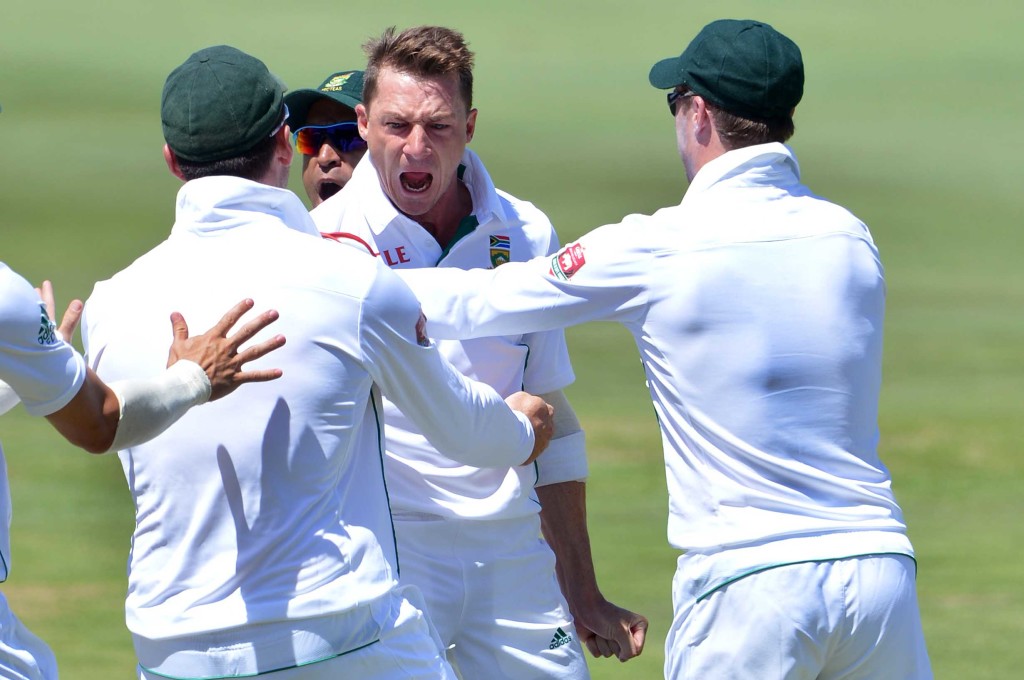Staring up from the cover of the book of ‘The 25 greatest South African cricketers of all time’ are 16 faces in black and white and nine in colour. This book, The Selected, was written by two of the country’s most respected cricket journalists in 2007.
Michael Owen-Smith and Neil Manthorp presumably burned the midnight oil many times in providing their definitive list of the finest cricketers to have played for South Africa. They even went so far as to name the 25 – and they provided long and convincing reasons for their decision – in order.
The book only took into consideration those who played official cricket for the country, which ruled out those affected by apartheid, black and white.
The top five, in order, were Graeme Pollock, Barry Richards, Mike Procter, Aubrey Faulkner and Allan Donald. Rounding off the top 10 were Eddie Barlow, Jacques Kallis, Dudley Nourse, Herby Taylor and Hugh Tayfield. The No 11 was John Waite. Barlow was made captain of the mythical team.
Of the modern generation, those who played their cricket in colour and not black and white, only Donald and Kallis made the ‘Best XI’, while Shaun Pollock came in at 14, Makhaya Ntini at 16, Jonty Rhodes at 20, Brian McMillan at 21, Mark Boucher at 22, Gary Kirsten at 23 and Graeme Smith snuck in at 25.
One needs to respect the painstaking research Owen-Smith and Manthorp put into the project, but how things have changed in the seven years since the book was written. It has to be argued with strong conviction, that the order of the top 25 – even the ‘Best XI’ – would look rather different in 2014 to what it did in 2007.
Just use Donald as an example. ‘White Lightning’ came in as the No 5 all-time greatest South African cricketer. He did so on the basis of 330 Test wickets from 72 matches and 272 ODI wickets from 164 matches.
Dale Steyn, who is shortly to complete a decade of international cricket, was not named in the 25. Now, though, drawing a line through Donald, Steyn would comfortably slot into the ‘Best XI’. His stats show he has taken 383 Test wickets from 75 games and 135 ODI scalps from 87 games. Their wicket-taking ratios are remarkably similar, although Donald’s averages are slightly better.
Yet, Steyn’s influence in the South African team is arguably greater than Donald’s was, although it’s a close-run thing. It might be perception, but when Steyn doesn’t fire, the Proteas struggle. Yes, there was that meteoric rise of Vernon Philander, but since the latter has understandably dipped in the rate of wickets he takes, the country’s bowling success largely falls on Steyn’s shoulders.
What there cannot be debate about is that he is now worthy of inclusion in the top 25 – which would knock No 25 off the cover of the book. That man is Graeme Smith, whose career was still a work in progress in 2007. But Smith now comfortably qualifies for the top 25, so Peter Pollock makes way.
Kallis will surely have moved from No 7 and into the top three – he has to be regarded as a greater all-rounder than Procter – and from there let the experts debate how he compares to Graeme Pollock and Richards.
What of other ‘new entries’?
AB de Villiers is one of the great players of the modern generation, a batsman of such ridiculous talent across all forms of the game that he makes batting look easy. Yes, equipment, clothing, pitches and law adjustments have helped batsmen but De Villiers is a great player, regardless of the era or nationality. His inclusion, comfortably in the top 25, would nudge Gary Kirsten – whose international days were over in 2004 – into ‘last spot’.
Does Hashim Amla, the Test captain, make the top 25? Yes. Kirsten hit 21 centuries in 101 Tests, and he had an average of 45.27 in the long format and 40.95 in ODIs. His highest score was 275.
Amla has struck 22 hundreds in 79 Tests at an average of 51.32 and his ODI average is over 54. Plus he has a 311no. He would come in, so it’s bye-bye Kirsten.
In fact, one can argue that when the Proteas reached the No 1 ranking in Test cricket, under the coaching guidance of Kirsten, they did so with five players who could be considered strong candidates for the top South African XI of all time.
My research is based on much broader brushstrokes than Owen-Smith and Manthorp’s was, but in looking at an all-time XI, my ‘team’ would incorporate: Graeme Smith (captain), Barry Richards, Hashim Amla, Graeme Pollock, Jacques Kallis, Dudley Nourse (or Aubrey Faulkner), AB de Villiers (wicketkeeper), Mike Procter, Hugh Tayfield, Dale Steyn and Allan Donald.
That is in batting order, not a list of greatest from one to 11, and it shows just how strong our cricket has been in the past seven years, arguably the strongest in the 125 years South Africa has played international cricket.
I’ll leave the rankings to the experts, which include you, the reader, but based on the book of 2007 and subsequent events, the three players I’d ‘drop’ from the 25 of the greatest ever would be Peter Pollock, Gary Kirsten and Brian McMillan, to accommodate the rise up the rankings of Smith, Mark Boucher and the ‘new entries’ of Steyn, De Villiers and Amla.
For the record, The Selected had the following players listed from 1-25, in order of their ‘greatness’: Graeme Pollock, Richards, Procter, Faulkner, Donald, Barlow, Kallis, Nourse, Taylor, Tayfield, Waite, Neil Adcock, Jimmy Sinclair, Shaun Pollock, Trevor Goddard, Ntini, Peter Kirsten, Jock Cameron, Colin Bland, Rhodes, McMillan, Boucher, Gary Kirsten, Peter Pollock and Smith.
This column appears in the current issue of Business Day Sport Monthly.







